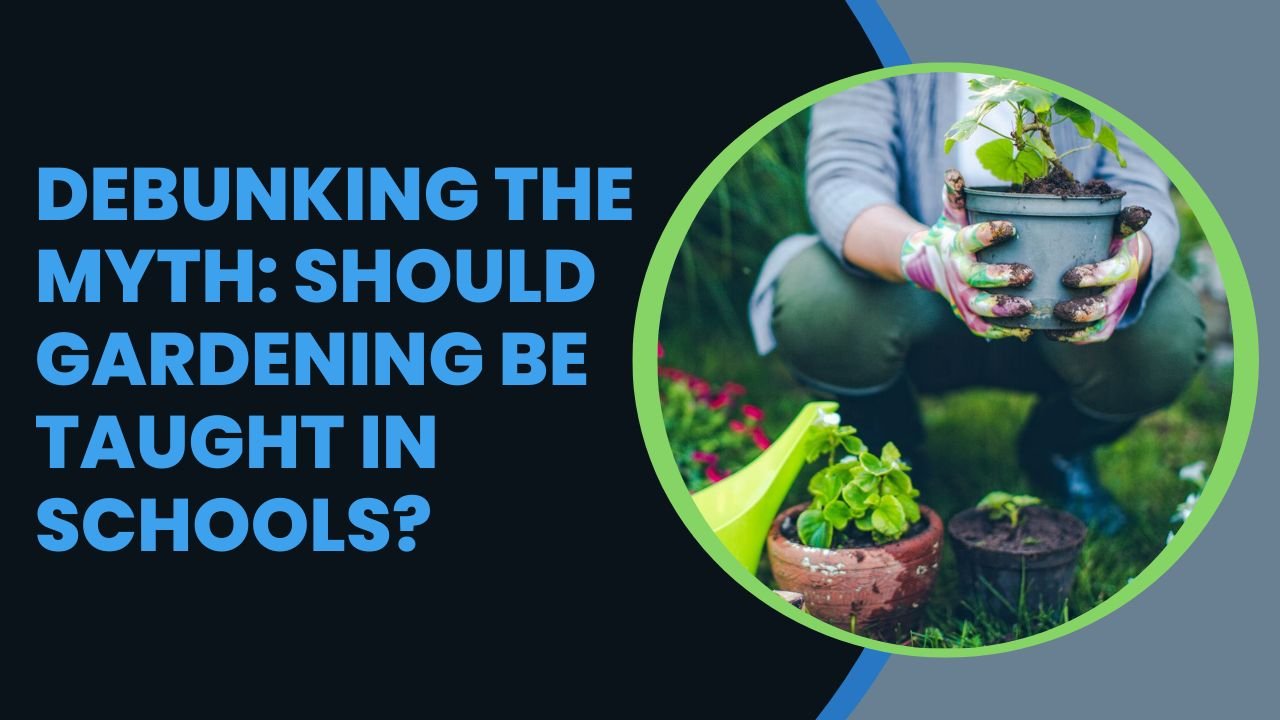Gardening has long been associated with leisure activities and personal hobbies. However, there is a growing debate surrounding whether gardening should be included as part of the curriculum in schools. Some argue that it is a valuable educational tool that can promote various skills and cognitive development, while others question its practicality and potential challenges.
In this article, we will explore the benefits of teaching gardening in schools, its educational value, skills development, the connection with nature, overcoming challenges, and address common concerns to debunk the myth surrounding gardening education.

Benefits of Gardening
Gardening offers numerous benefits that extend beyond the simple act of growing plants. It provides an opportunity for individuals, especially students, to engage with nature, cultivate a sense of responsibility, and foster environmental awareness. Additionally, it offers physical exercise, encourages healthy eating habits, and provides a serene and calming environment.
Educational Benefits
Hands-on Learning
By incorporating gardening into the curriculum, students can participate in hands-on learning experiences. They can observe the growth of plants, understand the importance of soil quality, and learn about the life cycle of various organisms. This practical approach enhances their understanding and retention of concepts.
Interdisciplinary Education
Gardening integrates multiple subjects such as biology, chemistry, environmental science, and mathematics. Students can explore scientific principles, conduct experiments, measure and record data, and apply mathematical concepts in real-life scenarios. This interdisciplinary approach enhances their overall educational experience.
Nurture Curiosity
Gardening stimulates curiosity and encourages students to ask questions, explore, and seek answers. It instills a sense of wonder about the natural world and fosters a lifelong love for learning. Students develop a deeper connection with their surroundings and develop critical thinking skills.
Skills Development
Critical Thinking
Gardening requires critical thinking skills, such as problem-solving, decision-making, and analytical reasoning. Students need to assess soil conditions, identify pests and diseases, and make informed choices to ensure plant growth and health. These skills transfer to other aspects of life and contribute to their overall development.
Problem-Solving
Throughout the gardening process, students encounter various challenges, such as pest control, nutrient deficiencies, and adverse weather conditions. They learn to identify problems, analyze causes, and implement effective solutions. This fosters resilience and problem-solving abilities.
Responsibility and Empathy
Caring for plants instills a sense of responsibility and empathy in students. They learn to nurture and protect living organisms, understand the impact of their actions, and develop a sense of empathy towards the environment. These qualities are vital for their personal growth and development as responsible citizens.
Connection with Nature
In today’s digital age, children often have limited exposure to the natural world. Gardening offers a means to reconnect with nature, appreciate its beauty, and develop a sense of environmental stewardship. It allows students to witness the intricate relationships between plants, animals, and their habitats, fostering a sense of awe and respect for the natural environment.
Overcoming Challenges
While implementing gardening programs in schools may pose challenges, such as limited space and resources, these obstacles can be addressed with creative solutions. Vertical gardening, container gardening, and community collaborations can maximize limited space. Additionally, seeking support from local organizations, businesses, and volunteers can provide the necessary resources and expertise.
Addressing Concerns
Space and Resources
One common concern is the availability of adequate space and resources for gardening in schools. However, schools can utilize alternative gardening methods, such as rooftop gardens, vertical gardens, or indoor hydroponics systems, which require minimal space. Additionally, partnerships with local communities and organizations can provide resources and financial support.
Curriculum Integration
Another concern is the integration of gardening into the curriculum without compromising other subjects. By adopting an interdisciplinary approach, gardening can be seamlessly incorporated into various subjects. Collaborative planning among teachers and educators can ensure that gardening activities complement and enhance existing curricula.
Successful Gardening Programs
Several schools around the world have successfully implemented gardening programs. For example, the Green Bronx Machine in New York City has transformed the lives of students through hands-on gardening experiences, resulting in improved academic performance, healthier eating habits, and increased community engagement. Such success stories serve as inspiration for other schools considering the integration of gardening into their educational programs.
Conclusion
Contrary to the myth that gardening should be excluded from school curricula, it has proven to be a valuable educational tool that offers numerous benefits. From cognitive development and interdisciplinary learning to skills development and a connection with nature, gardening provides a holistic approach to education. By addressing concerns and exploring successful gardening programs, we can embrace the inclusion of gardening in schools and empower students to become lifelong learners and responsible stewards of the environment.
FAQs
Can gardening be incorporated into urban schools with limited space?
Yes, urban schools can utilize alternative gardening methods, such as vertical gardens or indoor hydroponics systems, to maximize limited space.
Does gardening education only focus on plant cultivation?
No, gardening education encompasses various aspects, including environmental awareness, critical thinking, problem-solving, and nurturing empathy.
Is gardening education suitable for all grade levels?
Yes, gardening education can be adapted to different grade levels, from elementary schools to high schools, with age-appropriate activities and learning objectives.
